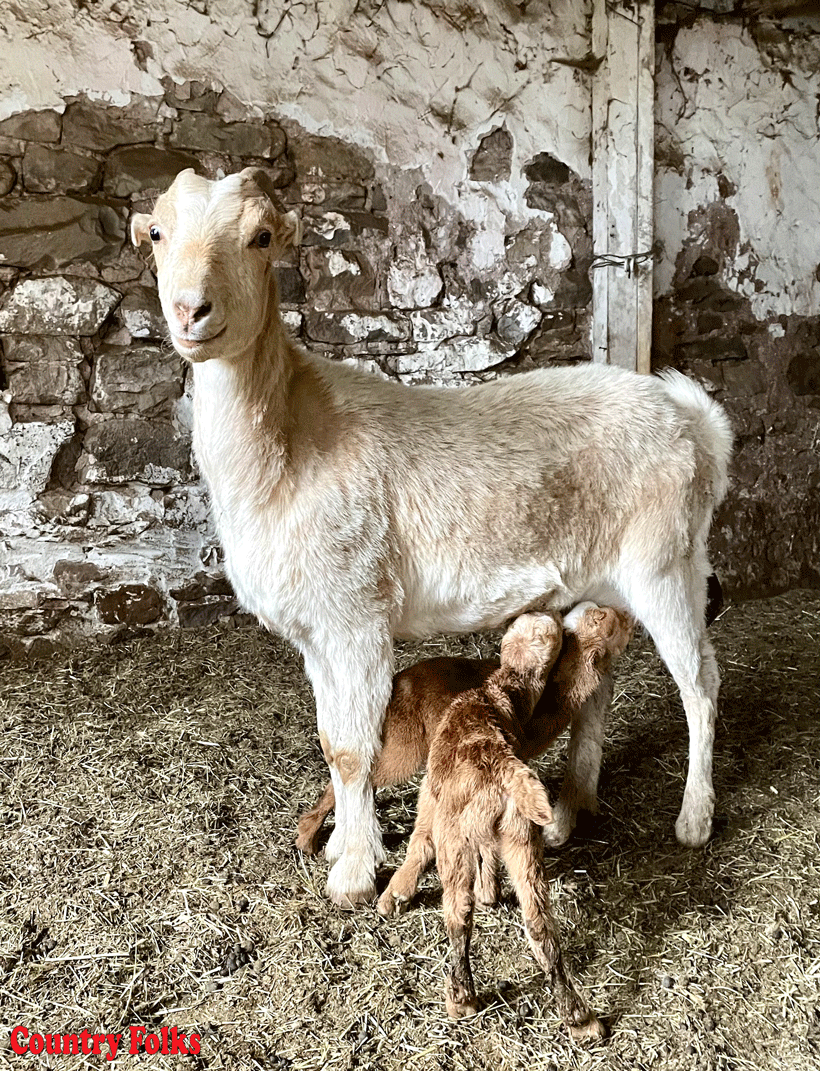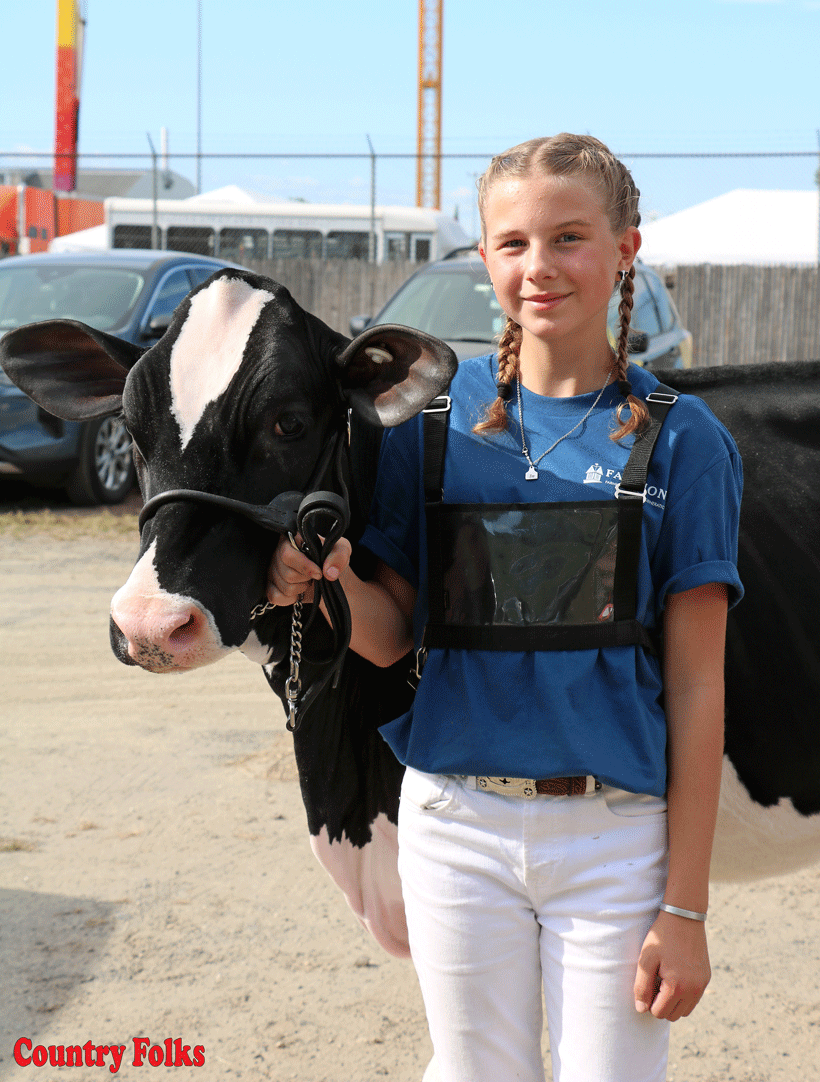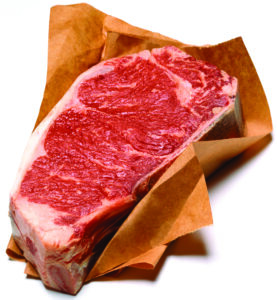For most of history, sheep and goats have been bred by natural service. However, with advances in breeding technology in other livestock, synchronized breeding and artificial insemination (AI) of sheep and goats is becoming more common.
Lacey Quail, Ph.D., livestock specialist at North Dakota State University, explained some of the breeding options for producers who want to maximize time, labor and genetic potential. The pre-breeding season begins with solid nutrition for proper hormone production that results in the female being ready to conceive.
The use of controlled internal drug release (CIDR) devices to control the estrous cycle is increasing. During regular ovulation, an egg is released; the hormones in a CIDR help manage this process.
Controlling ovulation can benefit producers in several ways. It can help with AI timing for optimum success, or facilitate lambs or kids being born in a more concentrated time period resulting in more uniform groups for the market.
Quail compared the estrous cycle and associated hormones to a row of dominoes – knock over one and more go down: “It’s critical to understand these time points because it impacts which hormones will be at play and what part of the cycle an animal is going to be in.”
Hormones can be used to help control when ovulation is occurring, which then allows timed AI or synchronized breeding. It’s important to understand which hormones are involved in each portion of the breeding cycle because some of them are in available products.
The estrous cycle is the period from one estrous occurrence to another. Estrus (or heat) is the breeding receptivity of females accompanied by noticeable behavior changes. During estrus, egg cells are released from the ovaries (ovulation).
In sheep, the estrous cycle averages 18 days; in goats, 21 days. During the middle of the cycle, a structure known as the corpus luteum (CL) prevents the release of additional egg cells.
Female behavior during estrus is the result of estrogen. “Estrogen peaks when a ewe or doe is in heat,” said Quail, “but during the rest of the cycle, estrogen is very low.”
Luteinizing hormone (LH) is responsible for releasing the egg so it can be fertilized. Progesterone is low on both ends of the cycle, but high during most of the cycle. The CL is responsible for making progesterone, which inhibits ovulation. Prostaglandin is responsible for inactivating the CL so progesterone is no longer produced and the cycle ends.
“The event we’re focused on is ovulation – the release of the egg cell,” said Quail. “If females are being AI’d, timing is critical. We want the lifespan of the egg cell to match the lifespan of the sperm cells. The other aspect to fine-tune is extending the lifespan of the CL or altering the lifespan to kill the CL so progesterone is no longer being produced and the ewe or doe will have a chance to ovulate.”
There has been significant research to test various hormone products for synchronization. LH is responsible for inducing ovulation, and a product with activity similar to LH is PG 600.
Progesterone is produced during the middle of the estrous cycle and prevents ovulation – no eggs are released when progesterone is high. Progesterone is present in CIDRs.
Prostaglandin is responsible for inactivating the CL and decreasing progesterone levels. A product that contains this hormone is Lutalyse. Quail noted that PG 600 and Lutalyse are not approved for use in sheep and goats. However, creating a synchronization program with the help of a veterinarian may provide access to some of these hormones.

To ensure lambs or kids born are born within a certain time of the year or in groups, controlled internal drug release (CIDR) devices can help. Photo by Sally Colby
In-season synchronization is designed to be used with natural service. When daylight decreases, animals begin to cycle. Synchronization doesn’t have to be used with AI. It can be valuable for planning lambing or kidding in a concentrated period. Research in this area has been focused on user-friendly protocols designed to use with natural service.
“We don’t have the timing of ovulation down to the hour like we might need for AI,” said Quail. “Instead, ewes and does come into heat over a several day period. It’s less synchronized because we don’t want to overwhelm the ram or buck with females in heat all at the same time. These protocols manipulate the lifespan of the CL. If we can target the CL and act on it when progesterone levels are decreasing, we know animals will come into heat fairly soon afterwards. That’s why there’s a several day period where ewes or does might be in heat.”
With synchronization used in conjunction with AI, estrus requires precise timing. “Again, it’s critical to line up the lifespan of the egg cell with the lifespan of the sperm cell to maximize reproductive success,” said Quail. “It’s much more critical to time this specifically, so we need a more involved protocol compared to natural service with synchronization.”
In AI protocols, a CIDR might be used for a certain amount of time; then, after the CIDR is removed, in about two days, ewes and does come into heat. “Based on when they show estrus you can time it for AI,” said Quail. “What we’ve gained from research in this area is learning the exact the timing.”
A typical estrous cycle, or the CL lifespan when progesterone is high, is between 11 and 15 days. “This mimics closely what’s naturally occurring in females,” Quail said. “A period of progesterone exposure, followed by prostaglandin, then ovulation, and estrus happens right after that.”
There are several protocols for AI, so producers should work with a vet to develop a program that best suits the farm. “The key point is to know your goals,” said Quail. “Each operation is different management-wise as well as their end goal. If you only want to increase the number of lambs or kids born in a three-week period, your synchronization strategy will be different from someone who will AI.”
Protocols should be planned around available facilities, from the synchronization process to AI, then be able to manage a group of females that are lambing or kidding within days of each other.
“Timing is everything for synchronization,” said Quail. “We’re mimicking something naturally occurring that is quite specific in the female physiology. For AI, accurate timing protocols are important. Plan ahead, including facilities, labor and supplies, and consult people who can help. Pregnancy rates hinge on it.”
by Sally Colby











Leave A Comment